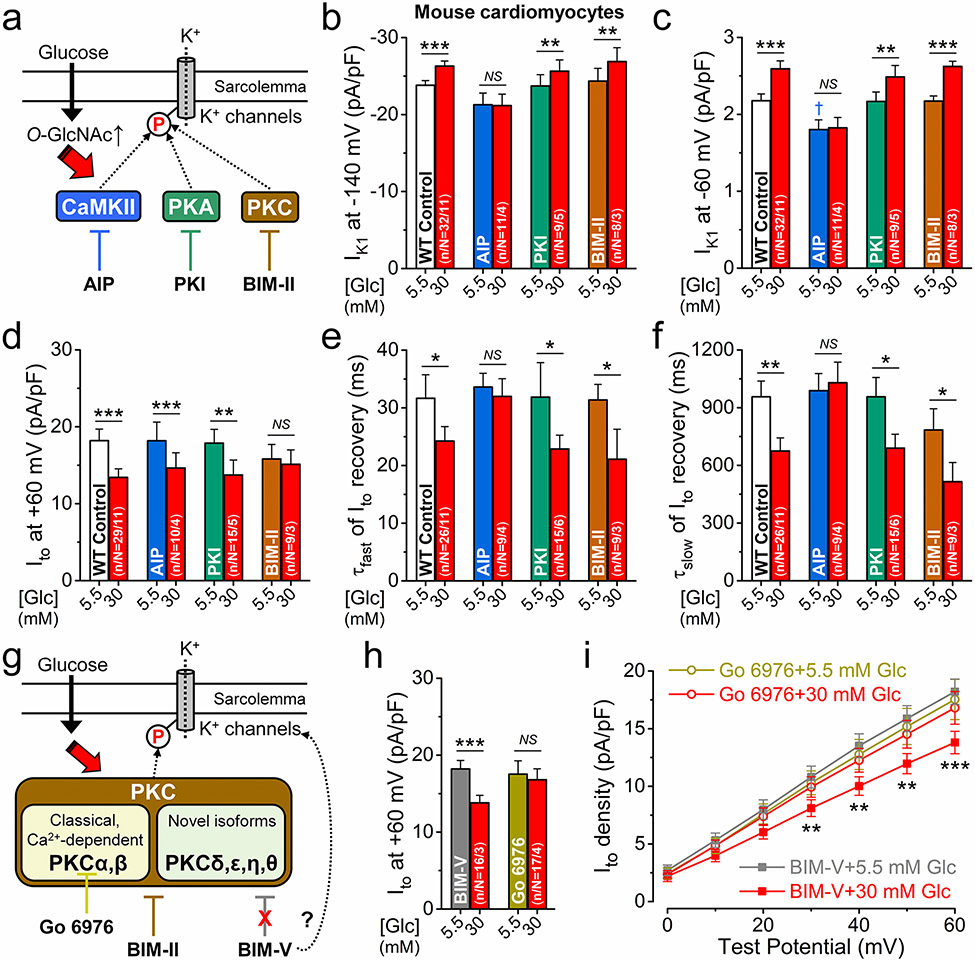Fig. 5.
CaMKII and PKC mediate the hyperglycemia effects on K+ channels. a Schematic of potential protein kinase pathways that may mediate the hyperglycemia effects on K+ channels and their selective inhibitors. b–f Inhibition of CaMKII using the specific autocamp-tide-2 related inhibitory peptide (AIP, 1 μmol/L) prevented the hyperglycemia effects on IK1 (b, c) and Ito recovery (e, f) in mouse ventricular myocytes. Selective inhibition of protein kinase C (PKC) using bisindolylmaleimide II (BIM-II, 100 nmol/L) prevented Ito reduction in hyperglycemia (d). Protein kinase A (PKA) inhibition using the selective protein kinase inhibitory peptide (PKI, 1 μmol/L) had no effect on K+ channels in hyperglycemia. g Schematic of PKC isoforms and inhibitors. h Go 6976 (100 nmol/L), a selective inhibitor of conventional, Ca2+-dependent PKC isoforms (PKCα and β) prevented Ito reduction in hyperglycemia. BIM-V (100 nmol/L), a structurally related but inactive analogue of PKC inhibitors had no effect on Ito in normal glucose and did not prevent Ito reduction in hyperglycemia. i I-V relationship of Ito following Go 6976 and BIM-V pretreatments. Two-way ANOVA; *p < 0.05, **p < 0.01, ***p < 0.001 vs. normoglycemia; †p < 0.05 vs. control

